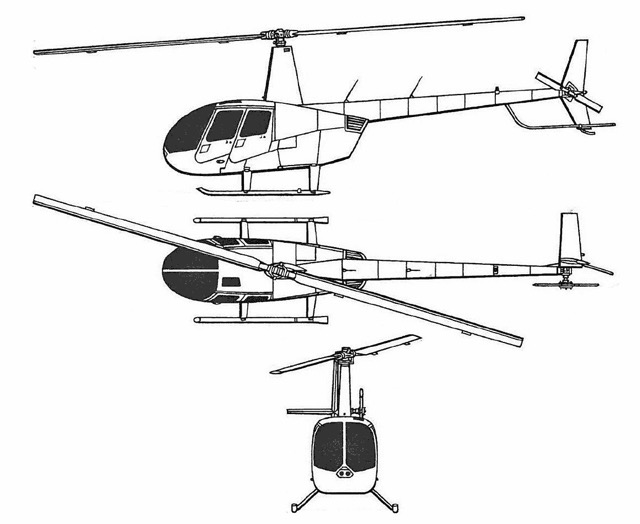R44 Raven
Summary
| Category | Military Training Aircraft |
| Origin country | 🇺🇸 United States |
| Manufacturer | Robinson |
| First flight | 31 March 1990 |
| Year introduced | 1993 |
| Number produced | 6331 units |
| Average unit price | $0.6 million |
Description
Designed during the 1980s by Frank Robinson and his team of engineers, the R44 made its first flight on March 31, 1990. The R44 Astro was awarded an FAA Type Certificate in December 1992, with initial deliveries commencing in January 1993.
The R44 is characterized as a single-engined helicopter, incorporating a semi-rigid two-bladed main rotor and a two-bladed tail rotor, complemented by a skid landing gear system. Its enclosed cabin offers two rows of side-by-side seating, accommodating a pilot and up to three passengers. A notable design alteration in the R44 is the reversed tail rotor direction compared to the R22, enhancing yaw control effectiveness with the advancing blade positioned at the bottom. Early models were prone to post-accident fires due to fuel tank design, which led to redesigns and mandatory retrofits.
The Robinson R44 has seen deployment across various sectors, serving civilian operators, law enforcement agencies, and flight schools. It has been utilized by military and governmental entities in countries such as Bolivia, the Dominican Republic, Jordan, Lebanon, Mexico, and others, for roles ranging from training to law enforcement. In 1997, an R44 completed the first helicopter circumnavigation of the world by a woman, covering 36,000 miles in 97 days, and as of 2014, the R44 held the piston speed record at 123 knots (228 km/h; 142 mph).
The first R44 Newscopter, equipped with onboard electronic news gathering technology, was delivered in 1998. In January 2000, Robinson introduced the Raven, featuring hydraulically assisted controls and adjustable pedals. Subsequently, in July 2002, the Raven II was introduced, boasting a more powerful, fuel-injected engine and wider blades, resulting in an increased gross weight and enhanced altitude performance. In November 2015 Robinson announced the Cadet, a Raven I with a cargo area instead of the two back seats, a slightly less powerful engine and a more efficient muffler. Robinson has conducted ground run testing with an aircraft diesel engine as a potential replacement for its Lycoming IO-540 avgas engine, which could offer better altitude performance, reduced fuel consumption from 16 to 12 US gal (61 to 45 L) per hour, and improved fuel availability with reduced lead pollution. In 2023, the R550X, an unmanned helicopter drone based on the R44 Raven II, was developed.
Main Variants:
-
R44 Astro: The original version, it was awarded an FAA Type Certificate in December 1992.
-
R44 Newscopter: This variant featured onboard electronic news gathering equipment and was first delivered in 1998.
-
R44 Raven: Introduced in January 2000, this model featured hydraulically assisted controls and adjustable pedals.
-
R44 Raven II: Introduced in July 2002, it has a more powerful, fuel-injected engine and wider blades for a higher gross weight and improved altitude performance.
-
R44 Cadet: Announced in November 2015, it is a Raven I variant with a cargo area instead of the two back seats, a slightly less powerful engine, and a more efficient muffler.
Technical specifications
| Version: R44 Raven | |
|---|---|
| Crew | 1 pilot + 1 member |
| Maximum speed | 240 km/h (149 mph) |
| Height | 3.3 m (10.8 ft) |
| Length | 11.7 m (38.3 ft) |
| Service ceiling | 4,300 m (14,108 ft) |
| Empty weight | 683 kg (1,506 lbs) |
| Max. takeoff weight | 1,134 kg (2,500 lbs) |
| Powerplant | 1 x Lycoming IO-540-AE1A5 6-cylinder pistons engine delivering 183 kW each |
Current operating countries
| Country | Units | ||
|---|---|---|---|

|
Lebanon | 6 | |

|
Bolivia | 5 | |

|
Estonia | 3 | |

|
Poland | 3 | |

|
Dominican Republic | 2 | |

|
Nicaragua | 1 | |

|
Peru | 1 | |
All operators

